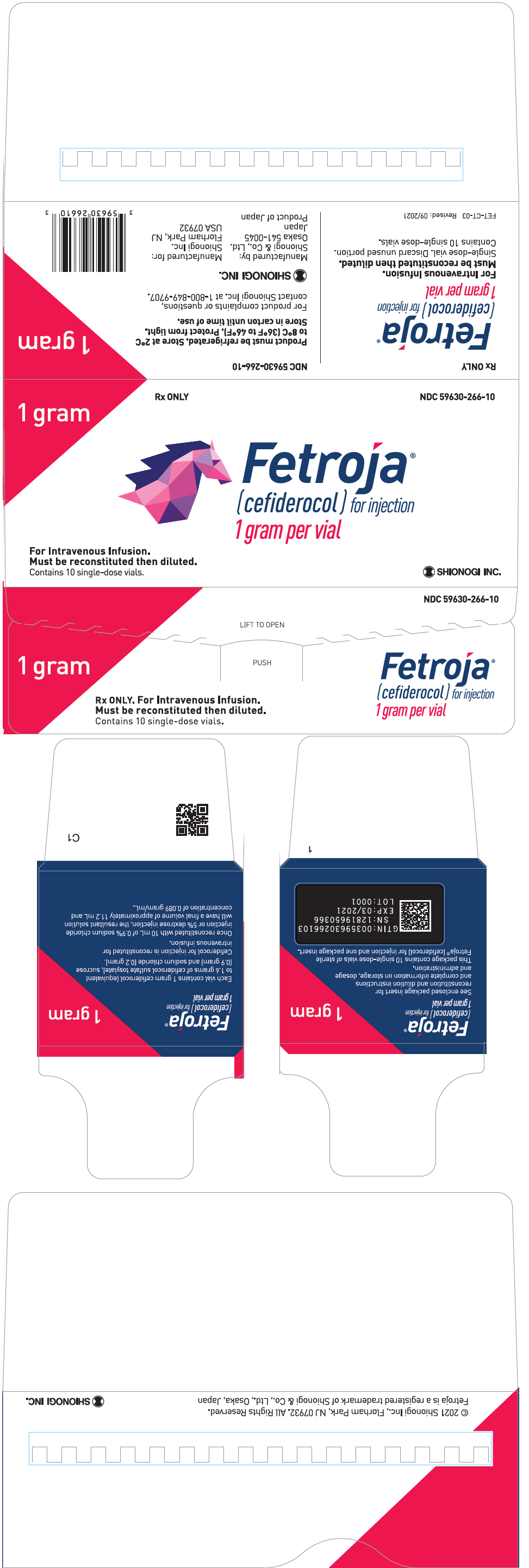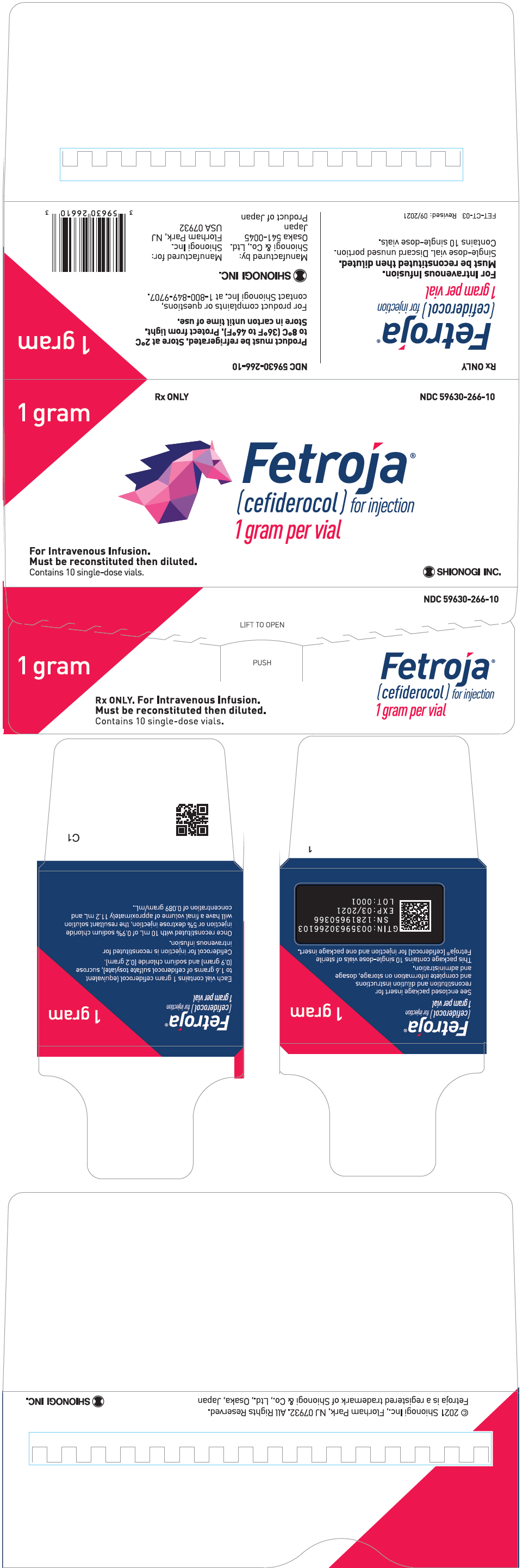12.2 Pharmacodynamics
The percent time of dosing interval that unbound plasma concentrations of cefiderocol exceed the minimum inhibitory concentration (MIC) against the infecting organism best correlates with antibacterial activity in neutropenic murine thigh and lung infection models with
E. coli,
K. pneumoniae,
P. aeruginosa,
A. baumannii, and
S. maltophilia. Compared to a 1-hour infusion, a 3-hour infusion increased the percent time of dosing interval that unbound plasma concentrations of cefiderocol exceed the MIC. The
in vivoanimal pneumonia studies showed that the antibacterial activity of cefiderocol was greater at the human equivalent dosing regimen of 3-hour infusion compared to that of 1-hour infusion.
Cardiac Electrophysiology
At doses 1 and 2 times the maximum recommended dosage, FETROJA does not prolong the QT interval to any clinically relevant extent.
12.3 Pharmacokinetics
Cefiderocol exposures (C
maxand daily AUC) in cUTI patients, HABP/VABP patients, and healthy volunteers are summarized in Table 6. Cefiderocol C
maxand AUC increased proportionally with dose.
Distribution
The geometric mean (±SD) cefiderocol volume of distribution was 18.0 (±3.36) L. Plasma protein binding, primarily to albumin, of cefiderocol is 40% to 60%.
Following a FETROJA 2-gram dose (or renal function equivalent dose) at steady state in patients with pneumonia requiring mechanical ventilation with a 3-hour infusion, the cefiderocol concentrations in epithelial lining fluid ranged from 3.1 to 20.7 mg/L and 7.2 to 15.9 mg/L at the end of infusion and at 2 hours after the end of infusion, respectively.
Elimination
Cefiderocol terminal elimination half-life is 2 to 3 hours. The geometric mean (±SD) cefiderocol clearance is estimated to be 5.18 (±0.89) L/hr.
Metabolism
Cefiderocol is minimally metabolized [less than 10% of a single radiolabeled cefiderocol dose of 1 gram (0.5 times the approved recommended dosage) infused over 1 hour].
Excretion
Cefiderocol is primarily excreted by the kidneys. After a single radiolabeled cefiderocol 1-gram (0.5 times the approved recommended dosage) dose infused over 1 hour, 98.6% of the total radioactivity was excreted in urine (90.6% unchanged) and 2.8% in feces.
Specific Populations
No clinically significant differences in the pharmacokinetics of cefiderocol were observed based on age (18 to 93 years of age), sex, or race. The effect of hepatic impairment on the pharmacokinetics of cefiderocol was not evaluated.
Patients with Renal Impairment
Approximately 60% of cefiderocol was removed by a 3- to 4-hour hemodialysis session.
Cefiderocol AUC fold changes in subjects with renal impairment compared to subjects with CLcr 90 to 119 mL/min are summarized in Table 7.
Patients Receiving CRRT
In an
in vitrostudy, effluent flow rate was the major determinant of cefiderocol clearance by CRRT. Variables examined included effluent flow rate, CRRT mode (CVVH or CVVHD), filter type and point of dilution (pre- or post-filter dilution). The effluent flow rate-based dosing recommendations in Table 2 are predicted to provide cefiderocol exposures similar to those achieved with a dose of 2 grams given every 8 hours in patients not receiving CRRT
[see
Dosage and Administration (2.2)]
.
Patients with CLcr 120 mL/min or Greater
Increased cefiderocol clearance has been observed in patients with CLcr 120 mL/min or greater. A FETROJA 2-gram dose every 6 hours infused over 3 hours provided cefiderocol exposures comparable to those in patients with CLcr 90 to 119 mL/min
[see
Dosage and Administration (2.2)]
.
Drug Interaction Studies
Clinical Studies
No clinically significant differences in the pharmacokinetics of furosemide (an organic anion transporter [OAT]1 and OAT3 substrate), metformin (an organic cation transporter [OCT]1, OCT2, and multidrug and toxin extrusion [MATE]2-K substrate), and rosuvastatin (an organic anion transporting polypeptide [OATP]1B3 substrate) were observed when coadministered with cefiderocol.
In Vitro Studies Where Drug Interaction Potential Was Not Further Evaluated Clinically
Cytochrome P450 (CYP) Enzymes: Cefiderocol is not an inhibitor of CYP1A2, CYP2B6, CYP2C8, CYP2C9, CYP2C19, CYP2D6, CYP2E1, or CYP3A4. Cefiderocol is not an inducer of CYP1A2, CYP2B6, or CYP3A4.
Transporter Systems: Cefiderocol is not an inhibitor of OATP1B1, MATE1, P-glycoprotein (P-gp), breast cancer resistance protein (BCRP), or bile salt export pump transporters. Cefiderocol is not a substrate of OAT1, OAT3, OCT2, MATE1, MATE2-K, P-gp, or BCRP.
12.4 Microbiology
Mechanism of Action
FETROJA is a cephalosporin antibacterial with activity against Gram-negative aerobic bacteria. Cefiderocol functions as a siderophore and binds to extracellular free (ferric) iron. In addition to passive diffusion via porin channels, cefiderocol is actively transported across the outer cell membrane of bacteria into the periplasmic space using the bacterial siderophore iron uptake mechanism. Cefiderocol exerts bactericidal action by inhibiting cell wall biosynthesis through binding to penicillin-binding proteins (PBPs).
Cefiderocol has no clinically relevant
in vitroactivity against most Gram-positive bacteria and anaerobic bacteria.
Resistance
In vitro,MIC increases that may result in resistance to cefiderocol in Gram-negative bacteria have been associated with a combination of multiple beta-lactamases, modifications of PBPs, and mutations of transcriptional regulators that impact siderophore expression.
Cefiderocol does not cause induction of AmpC beta-lactamase in
P. aeruginosaand
E. cloacae. The frequency of resistance development in Gram-negative bacteria including carbapenemase producers exposed to cefiderocol at 10× minimum inhibitory concentration (MIC) ranged from 10
-6to < 10
-8.
Cross-resistance with other classes of antibacterial drugs has not been identified; therefore, isolates resistant to other antibacterial drugs may be susceptible to cefiderocol.
Cefiderocol has shown
in vitroactivity against isolates of
S. maltophiliaand a subset of isolates of Enterobacterales and
P. aeruginosathat are resistant to meropenem, ciprofloxacin, amikacin, cefepime, ceftazidime-avibactam, and ceftolozane/tazobactam
.Cefiderocol has shown
in vitroactivity against subset of isolates of
A. baumanniicomplex that are resistant to meropenem, ciprofloxacin, and amikacin
.Cefiderocol is active against some colistin-resistant
E. coliisolates containing
mcr-1.
Cefiderocol demonstrated
in vitroactivity against a subgroup of Enterobacterales genetically confirmed to contain the following: ESBLs (TEM, SHV, CTX-M, oxacillinase [OXA]), AmpC, AmpC-type ESBL (CMY), serine-carbapenemases (such as KPC, OXA-48), and metallo-carbapenemases (such as NDM and VIM). Cefiderocol demonstrated
in vitroactivity against a subgroup of
P. aeruginosagenetically confirmed to contain VIM, IMP, GES, AmpC, and a subgroup of
A. baumanniicontaining OXA-23, OXA-24/40, OXA-51, OXA-58, and AmpC. Cefiderocol is active
in vitroagainst a subgroup of
S. maltophiliacontaining metallo-carbapenemase (L1) and serine beta-lactamases (L2).
Cefiderocol maintained
in vitroactivity against
K. pneumoniaein the presence of porin channel deletions (OmpK35/36), and against
P. aeruginosain the presence of porin channel deletions (OprD) and efflux pump up-regulation (MexAB-OprM, MexCD-OprJ, MexEF-OprN, and MexXY).
In vitro,the addition of the beta-lactamase inhibitors (such as avibactam, clavulanic acid, and dipicolinic acid) results in the lowering of MICs of some clinical isolates with relatively high MICs (range 2 to 256 mcg/mL) to cefiderocol.
Interaction with Other Antimicrobials
In vitrostudies showed no antagonism between cefiderocol and amikacin, ceftazidime/avibactam, ceftolozane/tazobactam, ciprofloxacin, clindamycin, colistin, daptomycin, linezolid, meropenem, metronidazole, tigecycline, or vancomycin against strains of Enterobacterales,
P. aeruginosa, and
A. baumannii.
Activity against Bacteria in Animal Infection Models
In a neutropenic murine thigh infection model using a humanized dose (2 grams every 8 hours), cefiderocol demonstrated 1log
10reduction in bacterial burden against most
E. coli, K. pneumoniae,
A. baumannii,
S. maltophilia,and
P. aeruginosaincluding some carbapenemase-producing (KPC, OXA-23, OXA-24/40, OXA-58) isolates with MICs of ≤ 4 mcg/mL to cefiderocol.
In an immunocompetent rat pneumonia model, reduction in bacterial counts in the lungs of animals infected with
K. pneumoniaewith MICs ≤ 8 mcg/mL,
A. baumanniiwith MICs ≤ 2 mcg/mL
,and
P. aeruginosawith MICs ≤ 1 mcg/mL including carbapenemase-producing (KPC, NDM, and IMP) isolates was observed using humanized cefiderocol drug exposure.
In an immunocompetent murine urinary tract infection model, cefiderocol reduced bacterial counts in the kidneys of mice infected with
E. coli, K. pneumoniae, and
P. aeruginosaisolates with MICs ≤ 1 mcg/mL. In an immunocompromised murine systemic infection model, cefiderocol increased survival in mice infected with
E. cloacae,
S. maltophilia, and
Burkholderia cepaciaisolates with MICs ≤ 0.5 mcg/mL compared to untreated mice. In an immunocompetent murine systemic infection model, cefiderocol increased survival in mice infected with
S. marcescensand
P. aeruginosaisolates with MICs ≤ 1 mcg/mL compared to untreated mice.
The clinical significance of the above findings in animal infection models is not known.
Antimicrobial Activity
FETROJA has been shown to be active against the following bacteria, both
in vitroand in clinical infections
[see
Indications and Usage (1)]
:
Complicated Urinary Tract Infections, Including Pyelonephritis
Gram-negative Bacteria
Escherichia coli
Enterobacter cloacaecomplex
Klebsiella pneumoniae
Proteus mirabilis
Pseudomonas aeruginosa
Hospital-acquired Bacterial Pneumonia and Ventilator-associated Bacterial Pneumonia (HABP/VABP)
Gram-negative Bacteria
Acinetobacter baumanniicomplex
Escherichia coli
Enterobacter cloacaecomplex
Klebsiella pneumoniae
Pseudomonas aeruginosa
Serratia marcescens
The following
in vitrodata are available, but their clinical significance is not known. At least 90% of the following bacteria exhibit an
in vitrominimum inhibitory concentration (MIC) less than or equal to the susceptible breakpoint for FETROJA against isolates of similar genus or organism group. However, the efficacy of FETROJA in treating clinical infections caused by these bacteria has not been established in adequate and well-controlled clinical trials.
Gram-negative Bacteria
Achromobacter spp.
Burkholderia cepaciacomplex
Citrobacter freundiicomplex
Citrobacter koseri
Klebsiella aerogenes
Klebsiella oxytoca
Morganella morganii
Proteus vulgaris
Providencia rettgeri
Stenotrophomonas maltophilia
Susceptibility Testing
For specific information regarding susceptibility test interpretive criteria and associated test methods and quality control standards recognized by FDA for this drug, please see https://www.fda.gov/STIC.



